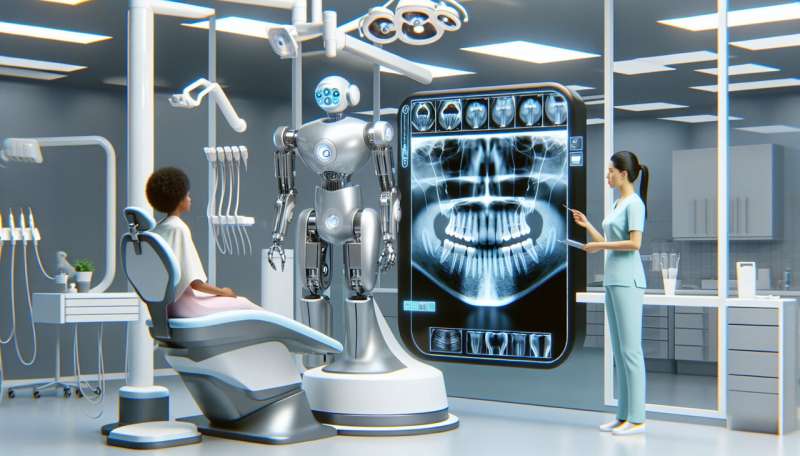This article has been reviewed according to Science X's editorial process and policies. Editors have highlighted the following attributes while ensuring the content's credibility:
fact-checked
proofread
Artificial intelligence algorithms for understanding the determinants of oral health

A study that used AI and predictive models to forecast the likelihood of permanent tooth loss as an indicator of overall oral health based on various behavioral and lifestyle factors was presented at the 102nd General Session of the IADR, which was held in conjunction with the 53rd Annual Meeting of the American Association for Dental, Oral, and Craniofacial Research and the 48th Annual Meeting of the Canadian Association for Dental Research, on March 13-16, 2024, in New Orleans, LA, U.S..
The abstract, "Artificial Intelligence Algorithms for Understanding the Determinants of Oral Health," was presented during the "Artificial Intelligence and Machine Learning Applications in Oral Health" Oral Session that took place on Thursday, March 14, 2024, at 8 a.m. Central Standard Time (UTC-6).
The study, by Seyedmisagh Imani of Marquette University School of Dentistry, Milwaukee, WI, U.S., used data on the Behavioral Risk Factors obtained from the Center for Disease Control's 2022 Behavioral Risk Factor Surveillance System (BRFSS). Different factors from a diverse group of respondents were collected, including age, gender, education, income, smoking history, chewing tobacco use, e-cigarette use, alcohol consumption, physical activity, sleep patterns, general health status, and dental care visits.
After cleaning and refining the dataset, a total of 293,398 individuals were evaluated. Five different machine-learning techniques were employed to predict tooth loss, including K-nearest neighbor, logistic regression, decision trees, random forests, and extreme gradient boosting trees.
Findings showed that although age and routine dental care were the strongest predictors for tooth loss, socioeconomic conditions also played a significant role, indicating their importance in predicting this condition. Indeed, models incorporating socioeconomic characteristics outperformed those relying solely on clinical dental indicators.
The best-performing machine-learning algorithm was the extreme gradient boosting trees, which exhibited the highest predictive performance in determining tooth loss (AUC = 81.2%). This study highlights the ability of machine-learning algorithms to predict tooth loss risk based on Behavioral Risk Factors.
The findings suggest that incorporating socioeconomic factors into predictive models can enhance their accuracy and effectiveness. These models have the potential to find practical application in clinical settings for identifying individuals at risk of tooth loss, enabling health care professionals to prioritize preventive interventions.





















